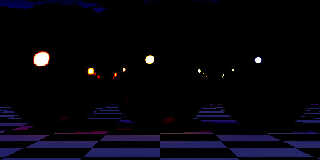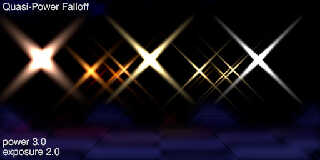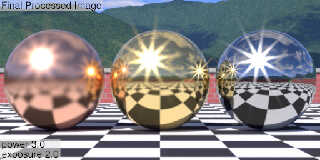My idea was to bleed only light that exceeded the RGB dynamic range;
that is, color in excess of rgb 1. Colors within the dynamic range
would remain un-smeared. My first thought was to see if I could adapt
Sam's luminous bloom rig for this purpose, but I haven't been able to
figure out how he did it.
I settled on mathematical manipulation of a pigment function. The
source image was rendered in the EXR format. It was slow, but it got
the job done. This POC tries to get the look of iris diffraction.
bleed_test_image2.jpg is a JPEG render of the source image. As noted
above, the actual source image was an EXR.
bleed_poc1-excess2.jpg shows the colors in excess of rgb 1.
bleed_poc3-power4.jpg shows the excess color smeared out into 4
diffraction spikes.
bleed_poc4-final4.jpg is the final combined image using 10 diffraction
spikes.
Post a reply to this message
Attachments:
Download 'bleed_test_image2.jpg' (51 KB)
Download 'bleed_poc1-excess2.jpg' (19 KB)
Download 'bleed_poc3-power4.jpg' (28 KB)
Download 'bleed_poc4-final4.jpg' (51 KB)
Preview of image 'bleed_test_image2.jpg'

Preview of image 'bleed_poc1-excess2.jpg'

Preview of image 'bleed_poc3-power4.jpg'

Preview of image 'bleed_poc4-final4.jpg'

|




![]()